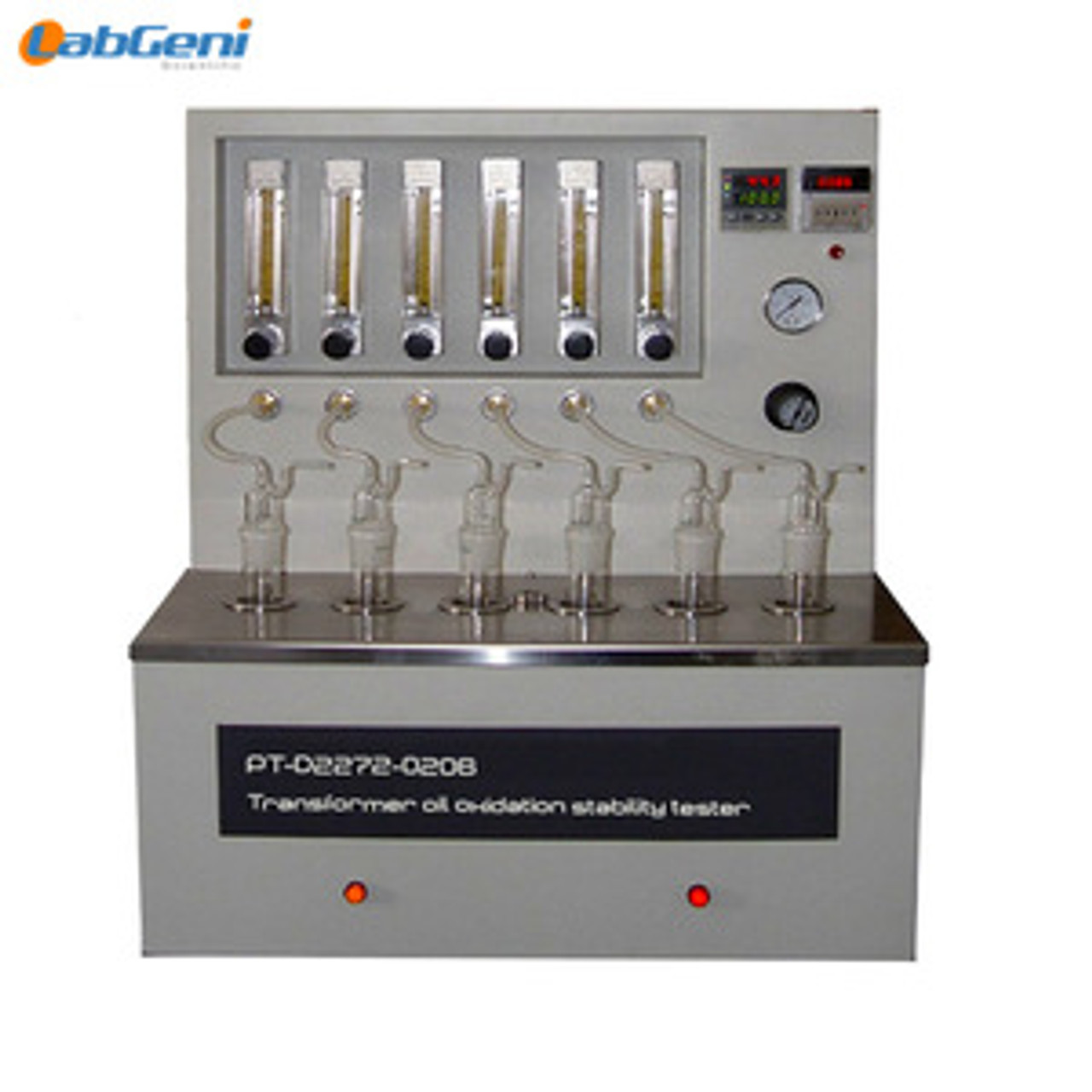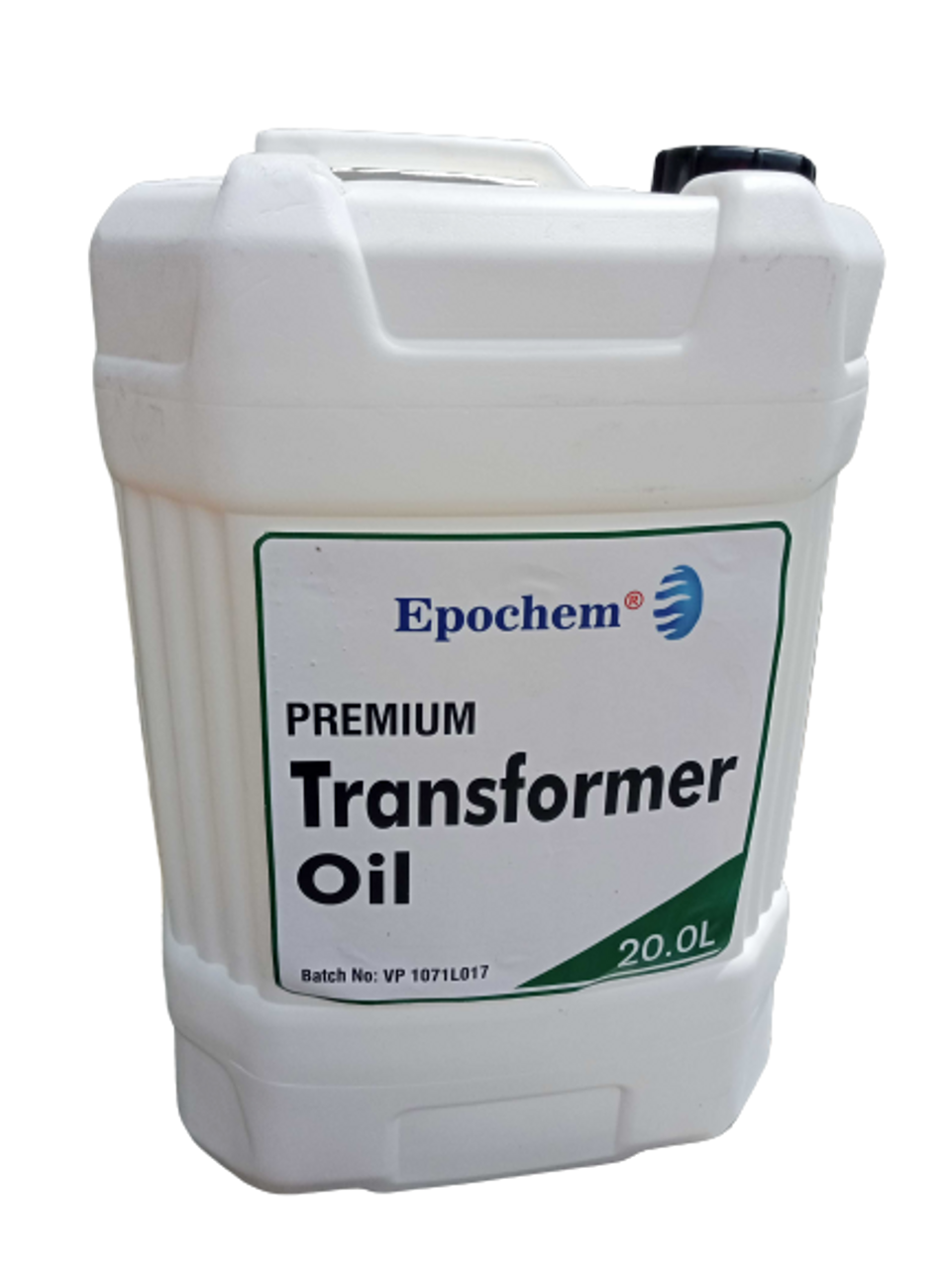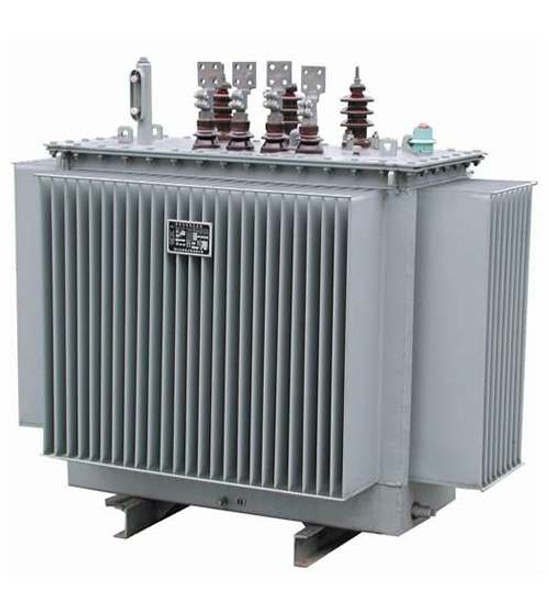The Key Role of Transformer Oil in Ensuring Reliable Power Distribution
Transformer Oil plays a critical role in reliable power distribution which is crucial for the functioning of our modern society, because they act as an insulating medium and coolant in electrical transformers, enabling them to handle high voltages, facilitate efficient energy transfer, and ensure reliable power distribution. Its unique properties and functionalities make it indispensable for the smooth operation of the power grid and the seamless delivery of electricity to end-users.
Now how does this work? Within the power distribution infrastructure, transformers play a vital role in stepping up or stepping down voltage levels to ensure efficient electricity transfer. These electrical transformers are equipped with insulation systems to protect them from electrical breakdowns and maintain their integrity. One of the critical components of this insulation system is transformer oil. The combination of the transformer and transformer oil brings about reliable power distribution which serves as the backbone of industries, businesses, and households, powering essential services and enabling economic growth. Any disruptions or failures in power distribution can lead to significant consequences, including financial losses, decreased productivity, and potential risks to public safety.
Transformer oil, also known as insulating oil or dielectric oil, is specifically designed to meet the demanding requirements of transformers. It serves as both an electrical insulator and a cooling agent, enabling transformers to function reliably and efficiently. The role of transformer oil in maintaining the performance and longevity of transformers is pivotal, making it an essential element in the power distribution ecosystem.
Transformer oil is typically a mineral-based oil that possesses specific properties and characteristics necessary for its intended application. It exhibits high dielectric strength, which means it can withstand high voltage levels without conducting electricity. This property is vital for preventing electrical arcing and insulation breakdown within transformers. Additionally, transformer oil has excellent thermal conductivity, allowing it to dissipate heat generated during transformer operation. This heat transfer property ensures that transformers operate within safe temperature limits, thereby preserving their efficiency and preventing overheating.
In this comprehensive guide we will learn about the roles transformer oil play in reliable power distribution
Understanding Transformers
Transformers are essential electrical devices used in power distribution systems to regulate voltage levels and facilitate the efficient transmission of electricity. They play a fundamental role in stepping up or stepping down alternating current (AC) voltages, enabling the transfer of electrical energy between different voltage levels.
The primary function of transformers is to transform electrical energy from one voltage level to another while maintaining the frequency of the electrical signal. This voltage transformation is necessary to match the requirements of different electrical systems, such as those found in power plants, substations, and residential or commercial buildings.
Transformers operate based on the principles of electromagnetic induction. They consist of two or more coils of wire, known as windings, and a magnetic core. The two primary windings are the primary coil and the secondary coil, which are wound around separate sections of the core.
Components and working principle of transformers
- Primary Coil: The primary coil is connected to the power source and is designed to receive electrical energy at a specific voltage level. The number of turns in the primary coil determines the voltage ratio between the primary and secondary windings.
- Secondary Coil: The secondary coil is connected to the load or the electrical system where the transformed voltage is required. The number of turns in the secondary coil determines the desired output voltage level.
- Magnetic Core: The magnetic core serves as a pathway for the magnetic flux generated by the alternating current flowing through the primary winding. It is typically made of laminated steel to reduce energy losses due to eddy currents.
The working principle of transformers involves the interaction between the magnetic field generated by the alternating current in the primary winding and the secondary winding. When an alternating current flows through the primary coil, it creates a constantly changing magnetic field around the coil. This magnetic field induces an alternating voltage in the secondary coil through electromagnetic induction.
According to Faraday's law of electromagnetic induction, the rate of change of magnetic flux linking the secondary coil induces a voltage across its terminals. The voltage induced in the secondary coil is directly proportional to the ratio of the number of turns in the primary and secondary windings. Therefore, by varying the number of turns in the windings, transformers can step up or step down the voltage levels as required.
The efficiency of transformers is crucial in minimizing energy losses during the transformation process. Various factors, such as the quality of the magnetic core material, the design of the windings, and the insulation systems, influence the efficiency of transformers.
Buy online ABB Transformer
The Role of Transformer Oil in Electrical Transformer
Transformer oil, also known as insulating oil or dielectric oil, is a specialized oil used in electrical transformers. It serves multiple purposes and plays a crucial role in ensuring the efficient and reliable performance of transformers.
The primary purpose of transformer oil is to provide electrical insulation and prevent arcing or breakdown of the transformer's internal components. The oil acts as a dielectric medium that isolates and protects the transformer's windings, core, and other electrical components from high voltages. By preventing electrical discharge, transformer oil helps maintain the integrity of the insulation system, ensuring that electricity flows smoothly through the transformer without any disruptions or short circuits.
Additionally, transformer oil serves as a cooling agent for the transformer. During operation, electrical transformers generate heat due to the resistive losses in the windings and core. Transformer oil's high thermal conductivity allows it to absorb and dissipate this heat, helping to regulate the temperature within the transformer. By effectively removing excess heat, the oil prevents overheating, which can lead to insulation degradation and transformer failure.
Importance of transformer oil in maintaining transformer performance
Transformer oil is critical in maintaining the performance and longevity of transformers. It plays a vital role in ensuring the reliable and efficient operation of these electrical devices.
1. Electrical Insulation:
One of the primary functions of transformer oil is to provide electrical insulation. By creating a barrier between conductive parts and preventing electrical arcing, the oil helps maintain the insulation integrity of the transformer. This insulation ensures that the electrical current flows along the desired path, minimizing losses and maintaining efficient energy transfer.
2. Heat Dissipation:
Transformer oil acts as a cooling medium, absorbing heat generated during transformer operation. Efficient heat dissipation is crucial for preventing temperature rise and maintaining the transformer within its safe operating limits. By dissipating heat effectively, the oil helps to preserve the insulation materials and prevents them from deteriorating due to excessive temperatures.
3. Contaminant Mitigation:
Transformer oil also plays a role in mitigating the effects of contaminants that may enter the transformer. Over time, moisture, dirt, and other impurities can find their way into the transformer. Transformer oil acts as a barrier and a medium for filtering out and trapping these contaminants, preventing them from causing insulation degradation or short-circuiting.
Buy Sinopec transformer oil at a cheaper rate
Functions of transformer oil in power distribution
In the context of power distribution, transformer oil performs several crucial functions:
1. Voltage Transformation:
Transformer oil enables the efficient transformation of voltage levels in power distribution networks. It allows for stepping up or stepping down the voltage as required, ensuring that electricity is transmitted at appropriate levels to meet the demands of various electrical systems.
2. Insulation Integrity:
By providing electrical insulation, transformer oil helps maintain the integrity of transformers in power distribution networks. It prevents electrical arcing and ensures the safe and reliable transmission of electricity without disruptions or failures.
3. Heat Management:
Transformer oil facilitates effective heat dissipation, thereby preventing overheating in transformers. It helps regulate the temperature within the transformer, preserving the insulation materials and ensuring the longevity of the equipment.
4. Contaminant Control:
Transformer oil acts as a protective medium against contaminants that may enter the transformer during power distribution. It helps filter out and trap moisture, dirt, and other impurities, maintaining the cleanliness of the insulation system and preventing performance degradation.
In summary, transformer oil plays a vital role in power distribution systems. It provides electrical insulation, dissipates heat, mitigates the effects of contaminants, and enables efficient voltage transformation. By performing these essential functions, transformer oil ensures the reliable and safe distribution of electricity, safeguarding the performance and longevity of transformers within the power grid.

Lubemax Transformer oil
Properties and Characteristics of Transformer Oil
A. Dielectric strength and insulation properties
Dielectric strength is one of the crucial properties of transformer oil. It refers to the ability of the oil to withstand high voltages without breaking down and conducting electricity. Transformer oil exhibits excellent dielectric strength, allowing it to effectively insulate the electrical components within transformers.
The high dielectric strength of transformer oil prevents electrical arcing and ensures that the electrical current flows through the desired path, along the windings and other conductive parts. By maintaining insulation integrity, transformer oil helps to prevent short circuits and electrical failures, contributing to the overall reliability and safety of the power distribution system.
Furthermore, transformer oil possesses high volume resistivity, which inhibits the flow of electrical current through the oil. This property is crucial for maintaining the insulation properties of the oil over time and preventing electrical leakage or losses.
B. Thermal conductivity and cooling capabilities
Thermal conductivity is another important characteristic of transformer oil. It refers to the ability of the oil to transfer heat effectively. Transformers generate heat during operation due to resistive losses in the windings and core. Efficient heat dissipation is essential to prevent overheating and ensure the longevity of the transformer.
Transformer oil exhibits good thermal conductivity, allowing it to absorb and carry away heat from the hotspots within the transformer. As the oil circulates through the windings and other components, it absorbs heat and transfers it to the cooling surfaces of the transformer, such as the tank and radiator. Through convective and conductive heat transfer mechanisms, the oil helps to regulate the temperature and maintain the transformer within safe operating limits.
The cooling capabilities of transformer oil are vital for preventing insulation degradation and maintaining the mechanical and electrical integrity of the transformer. By dissipating excess heat, the oil contributes to the overall efficiency and reliability of the transformer in power distribution systems.
C. Oxidation stability and aging characteristics
Oxidation stability is an essential property of transformer oil that determines its resistance to oxidation, a chemical reaction that occurs when the oil comes into contact with oxygen in the air. Oxidation can lead to the formation of harmful by-products, such as sludge and acids, which can degrade the performance and lifespan of the transformer.
Transformer oil is designed to exhibit excellent oxidation stability, allowing it to resist the effects of oxidation over an extended period. This stability is achieved through the inclusion of antioxidant additives in the oil formulation. These additives scavenge free radicals and inhibit the oxidation process, thereby preventing the formation of harmful degradation products.
Aging characteristics are also important considerations for transformer oil. Over time, transformer oil undergoes gradual degradation due to various factors such as thermal stress, electrical stress, moisture, and contaminants. This aging process can impact the performance and properties of the oil, potentially reducing its effectiveness as an insulating and cooling medium.
To manage the aging process, regular monitoring and testing of transformer oil are essential. Through oil analysis techniques, such as dissolved gas analysis (DGA) and physical and chemical tests, the condition of the oil can be assessed, and any necessary maintenance or oil replacement can be performed to ensure the continued reliability and performance of the transformer.
In summary, transformer oil possesses specific properties and characteristics that make it suitable for its role in power distribution. Its high dielectric strength and insulation properties enable effective electrical insulation, while its thermal conductivity and cooling capabilities facilitate efficient heat dissipation. Additionally, its oxidation stability and management of aging characteristics contribute to the longevity and reliability of the transformer within the power distribution system.
Every Transformers need transformer oil to function
How to Ensure Optimal Transformer Oil Performance
A. Regular testing and analysis of transformer oil
Regular testing and analysis of transformer oil are crucial to ensure its optimal performance and detect any potential issues before they escalate. Various tests are conducted to assess the condition of the oil and identify any signs of degradation or contamination.
1. Dissolved Gas Analysis (DGA):
DGA is a widely used method to monitor the health of transformer oil. It involves analyzing the concentration and type of gases dissolved in the oil. The presence of certain gases, such as hydrogen, methane, and ethylene, can indicate specific faults or abnormalities within the transformer, such as overheating, partial discharges, or insulation degradation.
2. Physical and Chemical Tests:
Physical and chemical tests are performed to evaluate various properties and parameters of transformer oil. These tests include measuring acidity, interfacial tension, moisture content, flash point, viscosity, and dielectric breakdown voltage. The results of these tests provide valuable information about the oil's condition and help assess its suitability for continued use.
3. Contaminant Analysis:
Transformer oil can be contaminated by various substances, including moisture, particulate matter, and dissolved impurities. Contaminant analysis helps identify the presence and concentration of these contaminants, allowing appropriate actions to be taken to mitigate their impact on the oil and transformer performance.
Importance of monitoring and maintaining Transformer oil quality
Monitoring and maintaining the quality of transformer oil is crucial to ensure its optimal performance and longevity. Several factors emphasize the significance of this ongoing process:
1. Performance Optimization:
Transformer oil acts as a critical insulating and cooling medium. By monitoring and maintaining its quality, the oil can effectively fulfill its intended functions, such as providing electrical insulation and dissipating heat. This optimization contributes to the overall efficiency and reliability of the transformer.
2. Early Detection of Issues:
Regular monitoring helps in early detection of any developing issues or abnormalities within the transformer oil. By identifying problems at an early stage, appropriate actions can be taken to prevent further degradation or failure. Timely interventions can help mitigate potential risks, extend the lifespan of the oil, and avoid costly repairs or replacements.
3. Prevention of Transformer Failures:
Transformer failures can lead to significant power disruptions, financial losses, and safety hazards. By monitoring oil quality, the risk of unexpected failures can be minimized. Maintaining the oil within acceptable quality parameters reduces the likelihood of issues that could compromise transformer performance and overall power system reliability.
Factors affecting transformer oil degradation and methods to mitigate them
Several factors contribute to transformer oil degradation, necessitating the implementation of mitigation measures:
1. Temperature:
High operating temperatures can accelerate oil degradation. To mitigate this, transformers are designed with cooling systems, such as radiators or fans, to dissipate heat effectively. Regular monitoring of oil temperature and appropriate maintenance of cooling systems help prevent excessive heat buildup and oil degradation.
2. Moisture:
Moisture ingress into transformers can lead to insulation breakdown, corrosion, and oil degradation. Proper sealing of transformer tanks, routine checks for leaks, and regular drying or filtration of the oil can help mitigate moisture-related issues.
3. Oxygen Exposure:
Transformer oil can oxidize when exposed to oxygen, resulting in sludge formation and acidity increase. The use of oxygen-absorbing materials in transformer design, such as sealed tanks or conservator systems, helps minimize oxygen exposure. Additionally, regular oil sampling and analysis can detect early signs of oxidation, prompting appropriate maintenance actions.
4. Contaminants:
Contaminants, such as dirt, dust, and conducting particles, can enter the transformer and impact oil performance. Effective filtration systems, regular inspections, and appropriate maintenance practices, such as oil filtration and purification, help mitigate the impact of contaminants and preserve oil quality.
5. Electrical Stress:
Electrical stresses, including overloading, voltage surges, and partial discharges, can degrade transformer oil. Proper design considerations, such as selecting the correct insulation materials, implementing effective grounding systems, and ensuring appropriate transformer sizing, help minimize electrical stress and reduce the potential for oil degradation.
Transformer available online
Safety Considerations for Transformer Oil
A. Handling and storage guidelines for transformer oil
Proper handling and storage of transformer oil are essential to ensure safety and prevent any risks or hazards. Some important guidelines include:
1. Personal Protective Equipment (PPE):
Operators and personnel involved in handling transformer oil should wear appropriate PPE, such as gloves, goggles, and protective clothing, to prevent direct contact with the oil and minimize the risk of skin irritation or absorption.
2. Storage Conditions:
Transformer oil should be stored in dedicated, well-ventilated storage areas, away from sources of heat, sparks, or open flames. The storage containers should be tightly sealed to prevent moisture ingress or contamination. Adequate signage and labeling should be present to identify the contents and associated hazards.
3. Spill Management:
Spill containment measures should be in place to prevent accidental oil spills. Spill kits, absorbent materials, and proper disposal procedures should be readily available. Prompt and effective spill response is crucial to minimize environmental impact and ensure worker safety.
4. Disposal and Recycling:
Transformer oil should be disposed of or recycled according to local regulations and environmental guidelines. Improper disposal can have detrimental effects on the environment. Working with certified oil disposal or recycling facilities ensures compliance with safety and environmental standards.
B. Environmental impact and sustainable practices
Transformer oil, like any other petroleum-based product, can have an environmental impact if not handled or disposed of properly. To mitigate these effects and promote sustainable practices:
1. Recycling and Reclamation:
Transformer oil can be recycled and reclaimed through various processes such as filtration, purification, and re-refining. Recycling helps reduce the demand for new oil production and minimizes the environmental footprint associated with oil extraction and refining.
2. Environmental Compliance:
Operators should adhere to environmental regulations and standards for the handling, storage, and disposal of transformer oil. By following these guidelines, the risk of environmental contamination and associated liabilities can be minimized.
3. Sustainable Alternatives:
Exploring and adopting sustainable alternatives to traditional transformer oil is a proactive approach to reducing environmental impact. Bio-based oils, vegetable oils, and synthetic esters are some examples of environmentally friendly alternatives that offer similar performance characteristics to mineral-based transformer oil.
By following safety guidelines, promoting environmentally responsible practices, and considering sustainable alternatives, the industry can reduce the impact of transformer oil on both human health and the environment, ensuring a more sustainable and responsible power distribution system.
Key Considerations for Choosing Transformer Oil
When selecting transformer oil, the following factors should be taken into account:
1. Dielectric Strength:
Dielectric strength refers to the oil's ability to withstand electrical stress without breaking down. The higher the dielectric strength, the better the insulation properties of the oil. It is essential to choose an oil with adequate dielectric strength to ensure electrical reliability.
2. Thermal Conductivity:
Transformer oil must have sufficient thermal conductivity to dissipate heat effectively. Optimal heat dissipation helps prevent excessive temperature rise, which can lead to accelerated aging and insulation degradation.
3. Chemical Stability:
Transformer oil should exhibit high chemical stability to resist oxidation, which can result in sludge formation, acidity increase, and reduced performance. Stable oil minimizes the risk of premature aging and extends the life of the transformer.
4. Low Viscosity:
Low viscosity oil flows more easily, allowing for efficient heat transfer and better cooling. This is particularly important in high-load or high-temperature environments.
5. Moisture Resistance:
Transformer oil should have excellent moisture resistance to prevent water absorption, which can lead to reduced dielectric strength and insulation breakdown. Moisture-resistant oil helps maintain the integrity of the transformer insulation.
6. Compatibility with Insulation Materials:
Transformer oil should be compatible with the insulation materials used in the transformer, such as paper or cellulose-based materials. Compatibility ensures that the oil does not degrade or adversely affect the insulation system.
7. Environmental Considerations:
Environmental factors should also be taken into account when choosing transformer oil. This includes compliance with environmental regulations, sustainability considerations, and the potential for oil spills or leaks.
8. Standards and Quality Assurance
Choosing transformer oil that meets international standards and quality assurance is essential for ensuring reliability and performance. Look for oils that comply with relevant standards, such as IEC 60296, ASTM D3487, or national standards specific to your region. Additionally, consider working with reputable suppliers or manufacturers with a proven track record of producing high-quality transformer oils.
9 Consulting Experts and Industry Guidelines
When in doubt or dealing with unique requirements, it is advisable to consult industry experts, transformer manufacturers, or specialized oil suppliers like GZ Industrial Supplies. They can provide valuable insights and guidance based on their expertise and experience.
10 Testing and Evaluation
Before introducing a new transformer oil into a power system, it is essential to conduct thorough testing and evaluation. This includes performing compatibility tests with the existing transformer materials, assessing the oil's dielectric strength, thermal conductivity, and other relevant properties. Testing helps verify the suitability of the oil for the specific application and provides assurance of its performance and reliability.

Buy online Transformer Oil Oxidation Stability Tester
11. Regular Monitoring and Maintenance
Once the transformer oil is selected and in use, regular monitoring and maintenance are critical. Implement a comprehensive oil analysis program to monitor the oil's condition, detect any degradation or contamination, and take appropriate corrective actions. Regular testing, sampling, and analysis allow for early detection of potential issues and help ensure the ongoing performance and longevity of the transformer.
Conclusion
Transformer oil plays a pivotal role in ensuring reliable power distribution. It serves as a critical insulator, dissipates heat effectively, and controls contaminants within transformers. The proper selection and maintenance of transformer oil are vital for maximizing the performance, longevity, and efficiency of transformers.
Throughout this discussion, we have explored the importance of reliable power distribution and the key role that transformer oil plays in achieving this goal. We have delved into the understanding of transformers, their components, and how they function. We have also explored the properties and characteristics of transformer oil, such as dielectric strength, thermal conductivity, and oxidation stability.
Furthermore, we have highlighted the significance of regular testing, monitoring, and maintenance of transformer oil to ensure optimal performance. We have emphasized the need to manage factors that contribute to oil degradation, such as moisture and contaminants. Additionally, we have underscored the importance of enhancing transformer life and reliability through proper maintenance, oil filtration, and managing moisture levels.
In conclusion, the key role of transformer oil in ensuring reliable power distribution cannot be overstated. By selecting the best transformer oil, adhering to industry guidelines, conducting regular testing and analysis, and implementing appropriate maintenance practices, power system operators can safeguard the integrity and efficiency of transformers, ultimately contributing to a stable and resilient power distribution network. Transformer oil is an indispensable component in the quest for reliable power supply, and its optimal performance is essential for the uninterrupted flow of electricity to homes, businesses, and industries.
Contact GZ Industrial Suppliesfor the best Transformer oil in Nigeria













